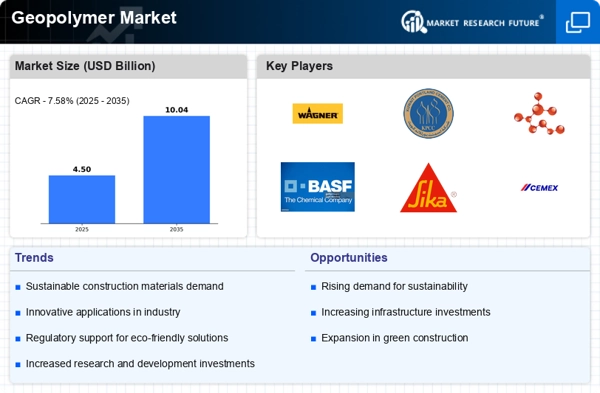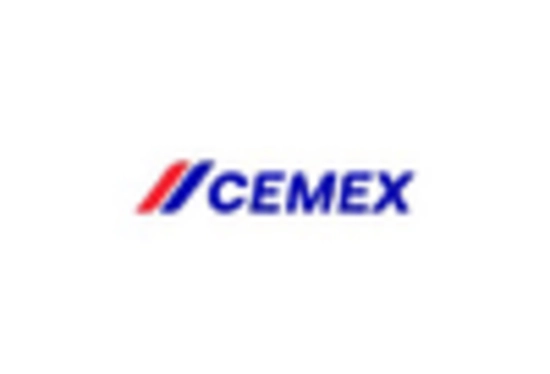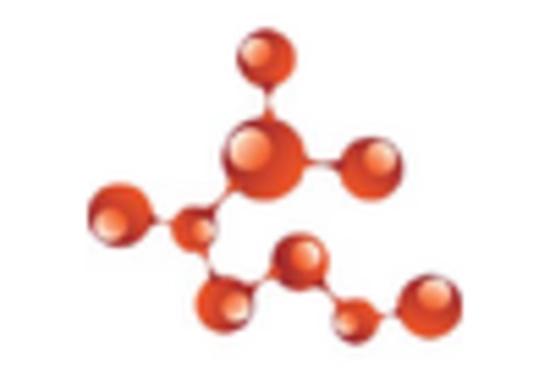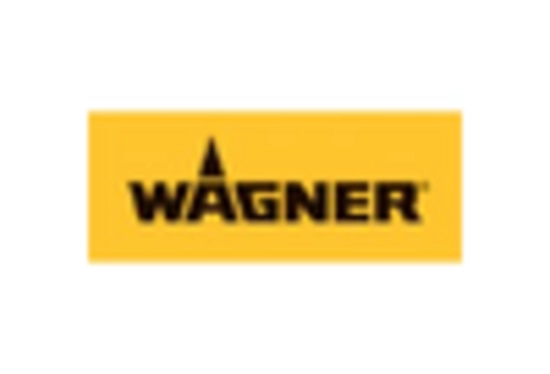Regulatory Frameworks
The establishment of supportive regulatory frameworks is a significant driver for the Geopolymer Market. Governments are increasingly implementing policies that promote the use of sustainable materials in construction. For instance, regulations aimed at reducing greenhouse gas emissions are encouraging the adoption of geopolymers, which are known for their lower carbon emissions compared to traditional cement. The Geopolymer Market is likely to benefit from these regulations, as they create a favorable environment for the growth of eco-friendly materials. Additionally, incentives for using recycled materials in construction could further enhance the market's expansion, as geopolymers often incorporate industrial waste.
Technological Innovations
Technological advancements play a crucial role in shaping the Geopolymer Market. Innovations in material science and engineering have led to the development of enhanced geopolymer formulations that exhibit superior mechanical properties and durability. Research indicates that these advancements could potentially increase the market share of geopolymers in construction applications by up to 30% by 2030. Moreover, the integration of digital technologies, such as 3D printing and smart manufacturing, is expected to streamline production processes, thereby reducing costs and improving efficiency. As these technologies evolve, they may further enhance the performance characteristics of geopolymers, making them more appealing to builders and architects.
Sustainability Initiatives
The increasing emphasis on sustainability is a pivotal driver for the Geopolymer Market. As industries strive to reduce their carbon footprints, geopolymers, known for their low environmental impact, are gaining traction. These materials utilize industrial by-products, such as fly ash and slag, which not only minimize waste but also lower energy consumption during production. The Geopolymer Market is projected to witness a compound annual growth rate of approximately 20% over the next five years, driven by the demand for eco-friendly construction materials. Furthermore, the construction sector's shift towards sustainable practices is likely to bolster the adoption of geopolymers, as they offer a viable alternative to traditional cement-based products.
Rising Construction Activities
The resurgence of construction activities across various sectors is a driving force for the Geopolymer Market. As urbanization accelerates, the demand for sustainable building materials is on the rise. The construction sector is projected to grow at a rate of 5% annually, which may lead to an increased interest in geopolymers due to their environmental benefits. Furthermore, the Geopolymer Market is likely to see heightened interest from infrastructure projects, where durability and sustainability are paramount. This trend suggests that geopolymers could become a preferred choice for construction companies looking to meet both regulatory requirements and consumer expectations for sustainable practices.
Increased Awareness and Education
The growing awareness and education regarding the benefits of geopolymers are vital drivers for the Geopolymer Market. As stakeholders in the construction sector become more informed about the advantages of using geopolymers, such as their resistance to chemical attacks and thermal stability, the demand is expected to rise. Educational initiatives and industry seminars are playing a crucial role in disseminating knowledge about geopolymer technology. This increased awareness could potentially lead to a market growth rate of 15% over the next few years, as more architects and engineers advocate for the use of geopolymers in their projects. The Geopolymer Market stands to gain from this trend, as it aligns with the broader movement towards sustainable construction.

















Leave a Comment